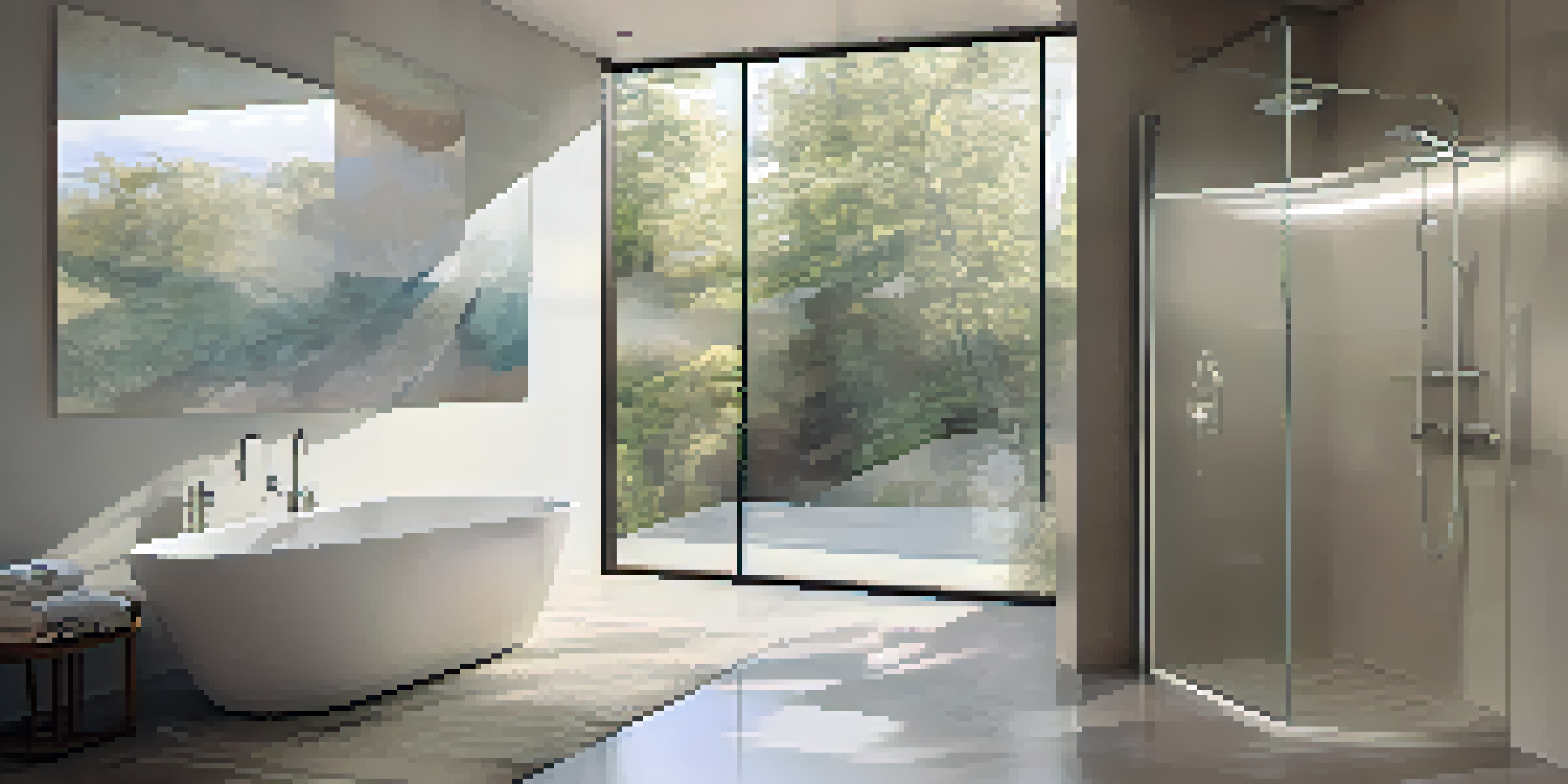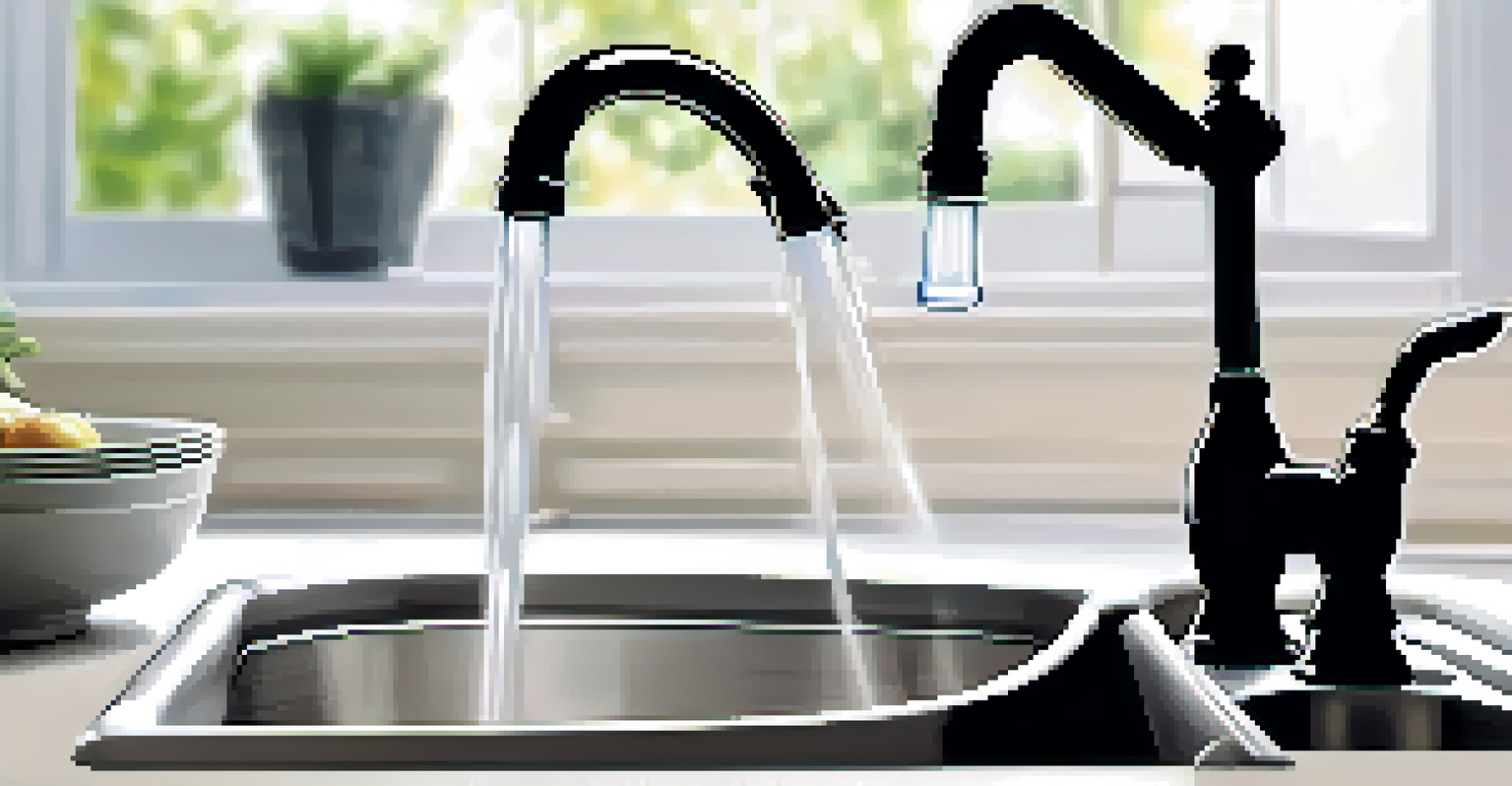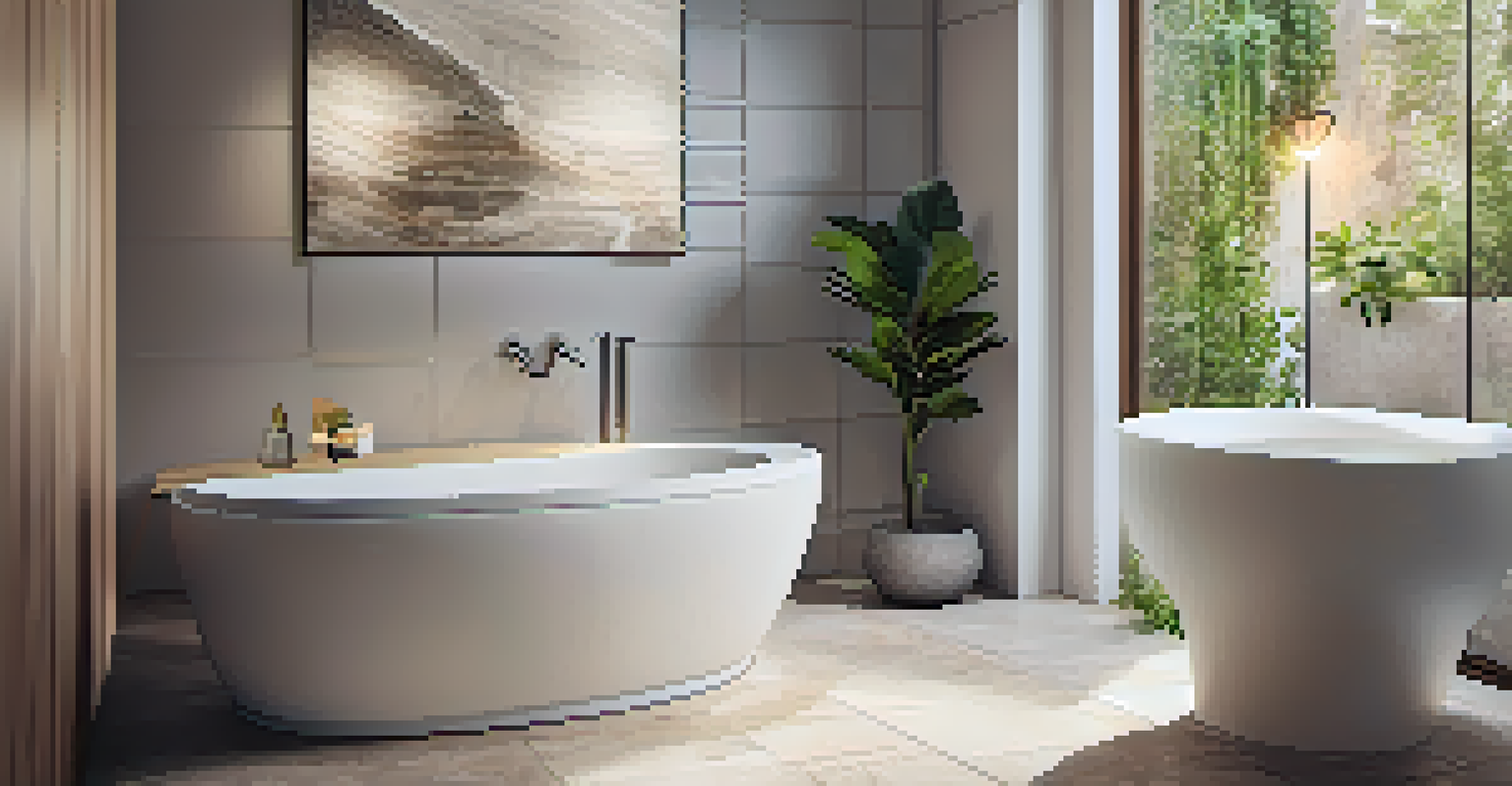How to Save Energy with Efficient Water Fixtures at Home

Understanding the Importance of Efficient Water Fixtures
Efficient water fixtures are essential for conserving both water and energy in your home. When we use less water, we naturally reduce the energy required to heat it, resulting in lower utility bills. Think of it like turning off the lights in a room when you leave—small changes can lead to significant savings over time.
The greatest threat to our planet is the belief that someone else will save it.
Moreover, with climate change and water shortages becoming more pressing issues, using efficient fixtures helps contribute to a more sustainable environment. By minimizing water waste, you're not just saving money; you're playing a part in conserving our planet's vital resources.
It's worth noting that many homes still have outdated fixtures that can be inefficient and costly. Upgrading to modern, efficient water fixtures can transform your water usage habits and lead to a noticeable difference in your energy consumption.
Choosing Low-Flow Showerheads for Energy Savings
One of the easiest upgrades you can make is switching to a low-flow showerhead. These fixtures are designed to use significantly less water without sacrificing pressure, allowing you to enjoy a refreshing shower while saving energy. For instance, a traditional showerhead may use about 2.5 gallons per minute, whereas a low-flow version can reduce that to 1.5 gallons or less.

This reduction in water usage translates directly into lower energy costs, especially when you consider that heating water accounts for a large portion of energy expenses in most households. Imagine cutting your shower time by just a couple of minutes with a low-flow showerhead—over time, those savings will really add up.
Upgrade Fixtures for Cost Savings
Switching to efficient water fixtures significantly reduces water and energy usage, leading to lower utility bills.
Plus, many of these fixtures come in stylish designs, so you won't have to compromise on aesthetics while making your home more energy-efficient. It's a win-win situation that benefits both your wallet and the environment.
Installing Faucet Aerators for Water Efficiency
Faucet aerators are small devices that can be easily attached to your kitchen and bathroom faucets. They work by mixing air with water, which reduces the flow rate while maintaining the same level of pressure. This means you can wash your hands or do dishes without wasting gallons of water unnecessarily.
We do not inherit the earth from our ancestors, we borrow it from our children.
By using aerators, you can cut your faucet water usage by up to 50%. Imagine how much water you could save over the course of a year—it's like having a mini conservation project right in your home. This not only helps the environment but also lowers your energy bills since less hot water is needed.
Installing aerators is a straightforward DIY project that requires minimal tools. With little effort, you can enhance your faucets’ efficiency and contribute to energy savings effortlessly.
Energy-Efficient Toilets: The Smart Choice
Upgrading to an energy-efficient toilet can make a huge difference in your water usage. Traditional toilets can use up to 3.5 to 7 gallons per flush, while modern high-efficiency models use only 1.28 gallons or less. This significant reduction means fewer trips to the water heater and lower energy costs.
Moreover, many energy-efficient toilets come with dual-flush systems, allowing you to choose between a full flush for solids and a lighter flush for liquids. This flexibility not only conserves water but also helps you make mindful choices about your usage.
Regular Maintenance is Essential
Performing routine checks and maintenance on your water fixtures helps ensure optimal efficiency and prolongs their lifespan.
While the initial investment may seem high, the long-term savings on your water bill can quickly recoup the costs. Just think of it as an upgrade that pays for itself over time while enhancing your home's sustainability.
Utilizing Hot Water Recirculation Systems
A hot water recirculation system is an innovative way to save energy by ensuring you have instant hot water at your taps. This system circulates hot water through your pipes, so you don’t have to wait for it to reach your faucet, reducing water waste and energy usage significantly.
With this setup, you can save both time and resources, as you won't need to let the water run while waiting for it to heat up. This is especially beneficial in larger homes where distance from the water heater can lead to prolonged waiting times.
Although there is an upfront cost for installation, the reduction in water waste and energy savings over time makes it a worthwhile investment. It's like having a personal assistant that ensures your water is always at the perfect temperature without waste.
Regular Maintenance for Maximum Efficiency
To ensure your water fixtures remain efficient, regular maintenance is key. Checking for leaks or drips can save you gallons of water that would otherwise go to waste. Even a small leak can add up to significant water loss and increased energy costs over time.
Additionally, cleaning aerators and showerheads can help maintain optimal water flow. Mineral buildup can diminish efficiency, so a simple vinegar soak can often do the trick. Keeping your fixtures in top shape not only saves water but also prolongs their lifespan.
Educate Family on Conservation
Involving your family in water conservation efforts fosters a culture of sustainability and encourages mindful usage.
Routine checks and maintenance may seem tedious, but they are essential for maximizing energy savings. By being proactive, you can ensure your home stays efficient and your utility bills remain low.
Educating Your Family on Water Conservation
Once you've made the switch to efficient water fixtures, it's important to educate your family about the benefits of water conservation. Engaging everyone in discussions about how their actions impact water usage can foster a sense of collective responsibility. For example, setting a timer for showers can encourage shorter wash times, leading to even more savings.
Creating fun family challenges around water saving can also be a great way to instill these values. Perhaps you can track who can save the most water over a week or month, making it a friendly competition that emphasizes the importance of conservation.

By involving the whole family, you create a culture of sustainability that goes beyond just fixtures. It’s about building habits that help conserve energy and resources for future generations.
The Long-Term Benefits of Energy Efficiency
Investing in efficient water fixtures at home is not just about immediate savings; it's about ensuring long-term benefits for both your wallet and the environment. Lower energy bills and reduced water waste contribute to a more sustainable lifestyle, which is increasingly important in today’s world. It’s similar to planting a tree: the initial effort may seem small, but the long-term impact is immense.
Moreover, homes equipped with energy-efficient fixtures often have higher property values. Potential buyers are more likely to be attracted to homes that promise lower utility costs and a reduced environmental footprint.
Ultimately, making these upgrades can lead to a ripple effect, encouraging others to follow suit. By being proactive and setting an example, you can inspire your community to embrace energy efficiency and contribute to a healthier planet.